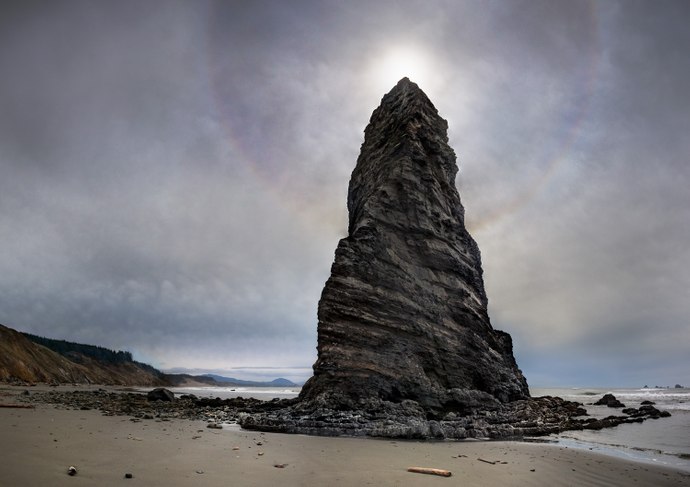Needle Rock, backlit by the midday sun, appeared out of place and oddly imposing against the soft, haloed light. Resembling an oversized arrowhead adorned with a brilliant, ethereal glow or the enigmatic "Eye of Providence" pyramid found on the back of one-dollar bills, this formation stood prominently at the low tide line of a beautiful, relatively unvisited shore along Oregon's south coast. Like other sea stacks, it is a remnant of a former headland – a hardened wedge of sandstone and conglomerate rock, its swirling layers tilted upward.
The movement of the Pacific Ocean's tectonic plates, slipping beneath the North American continent just offshore, pushes the Earth up along its outer edges. These crustal movements have shaped the headlands behind and to the left of this stack, lifting this part of the coastline into dry land. Geologically speaking, the cape's rising terrace is advancing rapidly, approximately an inch every decade. At the same time, eroding this upward movement, its rubbly slopes are prone to frequent landslides, and winter's ocean storms wear down its cliffs.
The sun broke through the thinning overcast as I set up my camera. Sun halos, while uncommon, form when clouds consist of ice crystals, typically cirrus or, in this case, cirrostratus clouds. They refract sunlight to create a bright circle with a radius of 22 degrees around the sun, accentuated by a sky slightly darkened between the sun and its halo. Under certain conditions, like here, the outline exhibits a color spectrum reminiscent of a faint rainbow.
Location research and commentary by James Baker.

